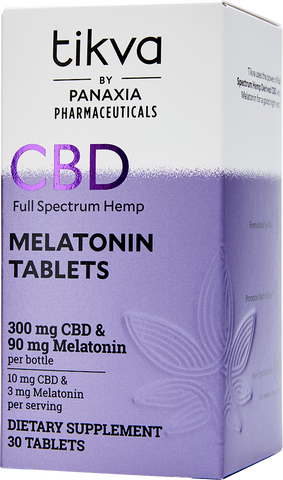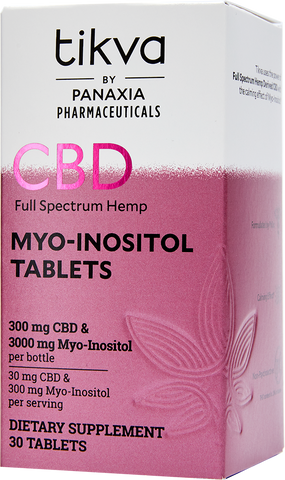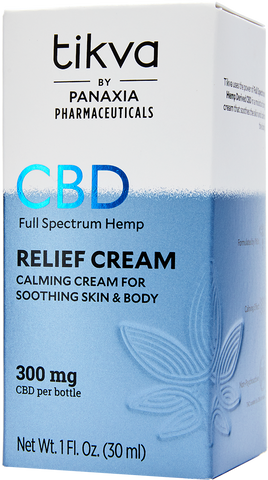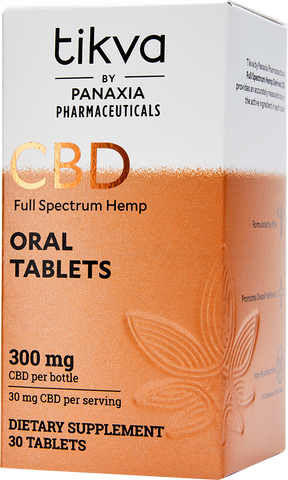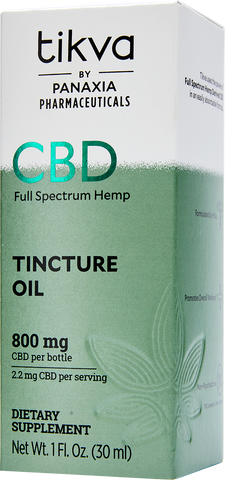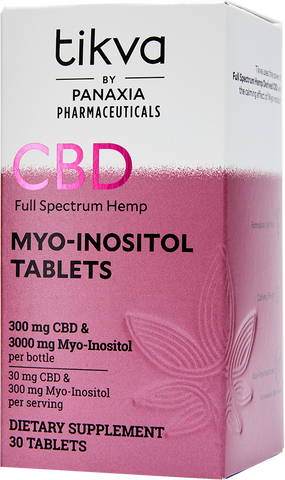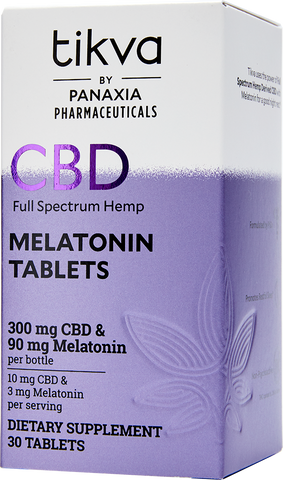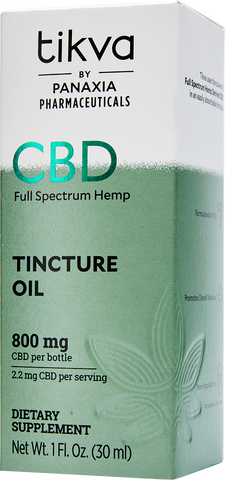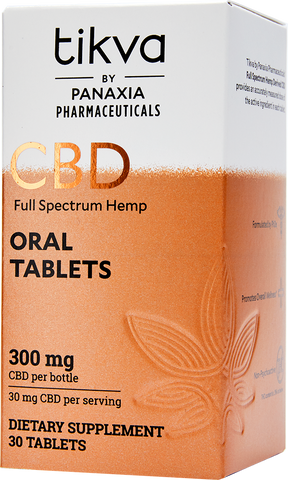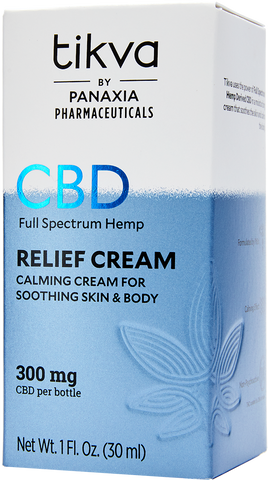Each new study on cannabis uncovers more of its therapeutic potential. While research is ongoing, scientists have established a fundamental understanding of the cannabis plant and how it interacts within the body.
Learn the fundamentals below, based on Pa naxia Pharmaceutical’s official Physician’s Desk Reference on Cannabis approved by the Israeli Ministry of Health
Brief History
The Endocannabinoid System
Cannabinoids & Cannabis Compounds
Hemp and Marijuana - What’s the difference?
Phytocannabinoids at the Cellular Level
The Entourage Effect
White papers
Brief History

The first recorded medicinal use of cannabis dates to ancient times. In China, cannabis was used for its neuroprotective effect as early as 2800 BCE (Li et al, 1974). Written evidence suggests that cannabis was used for treating glaucoma in ancient Egypt in 2350 BCE (Tomida et al, 2004). In 2000 BCE Mesopotamia, cannabis was described as "a drug for sorrow" (Farber et al, 1981), and in ancient India (1600 BCE) cannabis was referred to as an herb that reduces anxiety (Russo et al, 2005).
Historica l sources discuss cannabis use for a variety of medical indications, including depression, anxiety, spasticity, pain, bacterial/parasitic infections and inflammation (Russo et al, 2007, Zuardi, 2006)
Medical cannabis first appeared in the United States Pharmacopeia in 1850. It was applied in the treatment of neuralgia, tetanus, typhus, cholera, rabies, dysentery, alcoholism, opiate add iction, anthrax, leprosy, incontinence, snakebite, gout, convulsive disorders, tonsillitis, insanity, excessive menstrual bleeding, and uterine bleeding.
Cannabis - based medicines, mainly produced in the form of tincture, were easily purchased with no requ irement for a doctor's prescription. Towards the end of the 19th century, the United States began passing legislation and restrictions to limit the use of cannabis. In 1937, non - medical use was prohibited by the Marihuana Tax Act and subsequently was expel led from U.S. Pharmacopeia in 1941.
Cannabis continued to be used recreationally, and the ever - increasing number of anecdotal reports on its efficacy in a variety of medical conditions renewed the interest of the scientific community in the 1970s and 1980s.
Early Scientific Exploration
In th e 1960s, Dr. Raphael Mechoulam, Professor of Medicinal Chemistry at the Hebrew University of Jerusalem in Israel, initiated scientific exploration into medical cannabis and its active compounds. Newly developed technologies including chromatography and spe ctroscopy methods enabled Mechoulam to isolate and describe the structure of these molecules.
In 1963, Mechoulam and a team of researchers identified the chemical structure of Cannabidiol, or “CBD” (Mechoulam & Shvo, 1993). Then, in 1964, Mechoulam discovered the main psychoactive element of Cannabis Sativa plant, Delta - 9 - tetrahydro - cannabinol or "THC" (Gaoni & Mechoulam, 1964)
Since then, over 100 different compounds, known as phytocannabinoids, have been isolated and continue to be researched today (Fischedick et al, 2010). Mechoulam’s discoveries initiated Israel’s world l eadership in the field.
The Endocannabinoid System
Scientists first began to understand how cannabinoids interact with the body in 1988 after identifying and characterizing a cannabinoid receptor, known as CB1, in an animal’s brain (Devane et al, 1988)
Five years later, a second receptor, CB2, was identified (Munro et al, 1993). Both types of receptors are distributed throughout the body, however, CB1 is predominantly expressed in the central and peripheral nervous system, and CB2 is mainly associated with the immune system, reproductive system, and digestive system. It was lat er discovered that cannabinoids are also produced naturally in humans and animals.
Humans and all animals with a backbone have an endocannabinoid system. The Endocannabinoid System (ECS) is composed of endocannabinoids, cannabinoid receptors, and auxiliar y protein molecules. Cannabinoid receptors were found throughout the body in the brain, organs, connective tissues, glands, and immune cells (Alger, 2013).
The ECS is involved in a variety of physiological processes including neurogenesis, homeostatic regulation, energy balance, appetite, immune function, pain - sensation, mood, stress response, memory, and in mediating the psychoactive effects of cannabis (Pacher & Kunos, 2013).

Cannabinoids & Cannabis Compounds
The main compounds found in the cannabis plant include terpenes, flavonoids, and cannabinoids.
Terpenes
Terpenes are organic molecules produ ced by numerous plants. They are responsible for a plant’s scent and flavor. Each strain of cannabis has a unique terpene profile. Terpenes may also play an important role in differentiating the effects of various cannabis strains, though more studies are needed to understand how and to what extent.
Flavinoids
Flavonoids are a diverse group of phytonutrients, or plant chemicals, found in almost all fruits and vegetables. The primary function of flavonoids is to protect plants on a cellular level as regulators of the cell cycle.
Cannabinoids
Cannabinoids are a group of chemical compounds that serve as ligands that bind to receptors of the Endocannabinoid System.
Cannabinoids are classified into three groups, based on their source: endocannabinoids, phytocannabinoids, and synthetic cannabinoids.
Endocannabinoids
Cannabinoids naturally produced in humans and animals.
Endocannabinoids are lipophilic molecules whose chemical structure is based on arachidonic acid. The main endocannabinoids that have been discovered are Anandamide (N - arachidonoylethanol amide) and 2 - ara - chidonoylglycerol (2 - AG).
Anandamide serves as a neurotransmitter. From a pharmacological perspective, the activity of anandamide is similar to THC, despite their different chemical structure.
Anandamide easily crosses the blood-brain barrier (BBB) and binds with high affinity to C B1 in the central nervous system. It also acts as a partial agonist and binds with a lower affinity to CB2. Anandamide is essential in embryonic development and is apparently related to the emotions of happiness and joy. It is found mainly in the brain, an d its level increases following oxygen deprivation or brain injury.
The endocannabinoid 2 - AG has a similar affinity to CB1 and CB2 and serves as a full agonist to both. Its levels in the brain are significantly higher than those of anandamide, and there i s a debate concerning which of them bears the main responsibility for the activation of the neurotransmission system through CB1. Significant levels of 2 - AG were found in the spleen, apparently an indication of its function in the immune system and blood p ressure regulation processes.
Phytocannabinoids
Plant-derived cannabinoids that appear exclusively in the cannabis plant.
In the plant's natural state, phytocannabinoids are usually present in their acidic form (THCA, CBDA). Following decarboxylation (los s of the carboxyl group as a result of exposure to heat), the neutral and active form of the molecules are obtained. This form is responsible for most of the cannabinoids’ pharmacological activity. The rate of the spontaneous decarboxylation process is ver y slow at room temperature but is accelerated at high temperatures. In essence, when cannabis flowers are smoked, the burning process initiates decarboxylation and facilitates the absorption of the phytocannabinoids into the bloodstream when they are in th e active form. There are over 100 phytocannabinoids now identified in the cannabis plant. The most researched include Delta - 9 - Tetrahydrocannabinol (THC), Cannabidiol (CBD) and Cannabinol (CBN).

Synthetic Cannabinoids
Cannabinoids synthesized in a laboratory.
Synthetic cannabinoids (SCBs) are molecules synthesized in a laboratory as compounds comparable to natural cannabinoids. The majority of SCBs mimic the activity of the psychoactive cannabinoid THC. Studies showed that the use of SCBs may cause more frequent and severe unwanted effects than natural cannabis use.
THC
THC is the most well - known phytocannabinoid. It has a dominant psychoactive effect, as well as broad physiological effects, including pain relief and alleviation of tremor and nausea. THC also has anti - inflammatory properties, increases appetite, and alters visual and auditory perception and sense of smell. At low temperatures, THC is a glassy solid, and when heated, it becomes sticky and viscose. It ba rely dissolves in water but dissolves well in organic solvents, especially oils and alcohol.

CBD
CBD has no psychoactive effect and is considered the non - psychotropic constituent of the cannabis plant. This substance does not dissolve in water but does dissolve well in organic solvents like pentane. At room temperature it is a colorless crystalline solid. Researchers provide a reasonable factual basis supporting CBD's therapeutic potential for a number of physiological and psychological medical condition s due to its anti - inflammatory, anti - tremor, antispasmodic, antioxidant, neuroprotective, antipsychotic , anxiolytic, and sleep - modulating effects.
Studies support the fact that even in the acute administration of CBD, there are no significant toxic effect s in humans, regardless of whether it is taken orally, intravenously, or inhaled.
A patient’s sensitivity to THC is a key factor in adjusting the dose regimen. It seems that the only rare and significant risk likely associated with the use of CBD is a pot ential to cause immunosuppression (Carrier et al., 2006 ).
CBD may induce a biphasic reaction in the immune system, whereby high doses are associated with an inhibitory response, and low doses seem to stimulate immune system processes. Therefore, the physician needs to be extra cautious before recommending a high CBD dose to patients with depressed immune systems until further and more exhaustive research is carried out.
A treatment program based on CBD - rich cannabis products is desirable in many cases, especially when it comes to one or more of the following reasons:
- When there is an existing, reported, or suspected patient sensitivity to THC, whether before or after the initiation of cannabis treatment.
- For the treatment of common indications, including inflammatory conditions, seizure disorders, neurodegenerative diseases, spasms, and sleep problems.

Hemp & Marijuana - What’s The Difference?
Cannabis is the botanist term for the genus of plant in t he Cannabaceae family. Within this genus is the Cannabis Sativa species, of which the more commonly known three subspecies derive – Sativa, Indica, and Ruderalis. Within these three subspecies are thousands of individual strains that vary in their cannabin oid profiles.
From a botanical perspective, marijuana and hemp are the same species of plant, Cannabis Sativa, but a different variety. The terminology is also a legal distinction due to the psychoactive effects of THC. Marijuana plants have higher THC levels, while hemp plants have little to no THC, and therefore no psychoactive effects.

Marijuana plants have no limitations on THC, but marijuana and its derivative products must acquire specific licensing and can only be sold in legal marijuana dispensa ries (some state laws still prohibit the sale of THC ).
Hemp CBD and its derivative products must contain less than 0.3% THC to legally be sold throughout the United States (some state laws still prohibit the sale of CBD ). If a hemp farm’s harvest tests ab ove 0.3% THC, it is no longer considered hemp and must be disposed of.
Hemp seed oil is not the same as CBD oil. While both products are derived from a >0.3% cannabis sativa plant (hemp), hemp seed oil is extracted from hemp seeds for nutrients and fatty acids, while CBD oil is extracted from the flowers, leaves, and stalks of cannabis plants where phytocannabinoids are found.
Though CBD is commonly associated with hemp, these two terms are not synonymous. CBD is an individual compound found within hemp and marijuana, just like THC and all other phytocannabinoids. CBD can be extracted in the same way from marijuana as it is from hemp. However, due to marijuana’s legal classification, CBD derived from marijuana can only be sold in a licensed dispensary. Th ere are many benefits to combining different amounts of CBD and THC for specific indications, which is why you see various ratios of THC:CBD products in these dispensaries.
The amount and ratio of phytocannabinoids are highly variable in every strain of c annabis, resulting in differing therapeutic benefits. Further study of cannabis is integral to understanding best treatment protocols for specific indications.
Phytocannabinoids at the Cellular Level
The physiological effect of cannabinoids on the body d epends on the CB receptor's location and the type of interaction with a cannabinoid molecule.
THC acts as a partial agonist to CB1 and CB2 receptors. A very high binding affinity of THC to the CB1 receptors, located mainly in a central nervous system, appears to mediate its psychoactive properties, including euphoric mood changes, appetite increase s, and short - term cognitive and memory impairment. THC is also well known for its analgesic properties, which seems to involve both central and peripheral mechanisms.

CBD is an antagonist of CB1 and CB2 receptors, with a higher affinity for CB2 that is m ainly found in the periphery, among other places, in the immune system cells, which can explain its anti - inflammatory activity. CBD does not appear to have psychotropic qualities, but it was found responsible for its mediating effect on the psychoactivity of THC and shown its possible anti - anxiety and anti - psychotic effects under preliminary research.
CBD influences many non-cannabinoid receptor systems, including opioid and dopamine receptors – these receptors play a crucial role in pain management and b ehavioral regulation.

The Entourage Effect
Cannabis products, including hemp CBD products, can either be full spectrum, broad - spectrum, or isolate.
Full Spectrum
Full - spectrum extract contains all phytochemicals naturally found in the plant, including CBD, trace cannabinoids, terpenes, and essential oils. Full - spectrum extracts from hemp also come with a negligible THC content — below 0.3%.
It has been demonstrate d that medical cannabis can be more effective in its whole and natural state.
This phenomenon is called the "entourage effect," (Russo 2011) which means that cannabinoids, terpenes , and flavonoids presented within the Cannabis Sativa plant show greater therapeutic potential when consumed together than in isolation.
A recent study revealed how using full - spectrum hemp extracts, as opposed to using products with isolated CBD, demonst rated a clear correlation between full - spectrum hemp use and improved efficacy in inflammatory conditions (Gallily, Yekhtin & Hanus, 2015).
Broad Spectrum
Entirely lacking THC, broad - spectrum products are produced in one of two ways; either THC is removed from the full - spectrum extract, or CBD isolate is combined with other isolated cannabinoids, t erpenes, and flavonoids, to mimic the full - spectrum extract without THC.
Isolate
CBD isolate is a pure, crystalline form of CBD extract that is manufactured to remove the presence of any other beneficial terpenes, flavonoids, or cannabinoids.

CBD Advanced Certification Online Course
In partnership with Medical Marijuana 411, the US and global leader for cannabis certifications and government required cannabis education, Tikva is proud to offer you an online educational course on us, valued at $279.00.
The Medical Marijuana 411 te am of professionals has developed a state - of - the - art online eLearning program for medical marijuana education. This online course is certified by Washington state and can be used as credits for Washington State Medical Marijuana Consultant Certification, a long with the annual state - required Continuing Education courses to maintain certification.
This course has been designed to walk you through the fundamentals of CBD and provide you with the latest science and research of how this natural medicine can po ssibly improve your health and wellness.
Register NowAlready registered? Login to your course
Are you interested in additional cannabis education and courses?
Resource Suite
Many of your patients are looking for effective alternatives to traditional medications. Discover natural solutions that may be appropriate for your patients.
Sleep Management
Restful sleep is essential to your patients’ overall health and wellness. Discover how CBD can impact your patient’s sleep hygiene.
Stress & Anxiety
Stress and anxiety negatively affects your patients’ mental health. Discover how CBD can support your patients’ well-being.
Pain & Inflammation
Pain and inflammation impacts your patients’ physical mobility and quality of life. Discover how CBD can provide relief to your patients.

The Tikva Difference
All Tikva products are manufactured exclusively by Panaxia Pharmaceutical Industries, a world - renowned pharmaceutical company with over a decade of clinical research in medical cannabis.
Panaxia manufactures Tikva’s full - spectrum, USA - grown, Hemp (>0.3% THC) CBD products in the United States at a GMP compliant laboratory. Panaxia’s 10 - year lead on U.S. cannabis companies make Tikva products virtually unmatched by any other medical CBD brand.
Tikva sets a new bar in the CBD industry by producing our p roducts at the same strict standards as pharmaceutical medications. By creating indication - driven formulations, we provide options for your patients that suffer from these common afflictions.
Discover Now
Have More Questions?
Are you a healthcare practitioner? Get in touch with our service team, powered by PharmaCentra Physician Support.
Available weekdays: 9am - 6PM ES T, Monday - Friday
Phone: 833-30-TIKVA (833-308-4582)
Email: TIKVA@physician-reach.com
Are you a patient or customer? Get in touch wtih our customer support team!
Available weekdays: 9AM-5PM PST
Phone: 888-9963599
Email: info@tikvahealth.com
